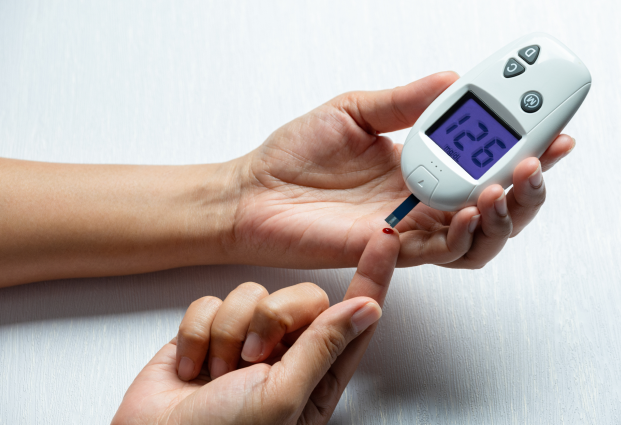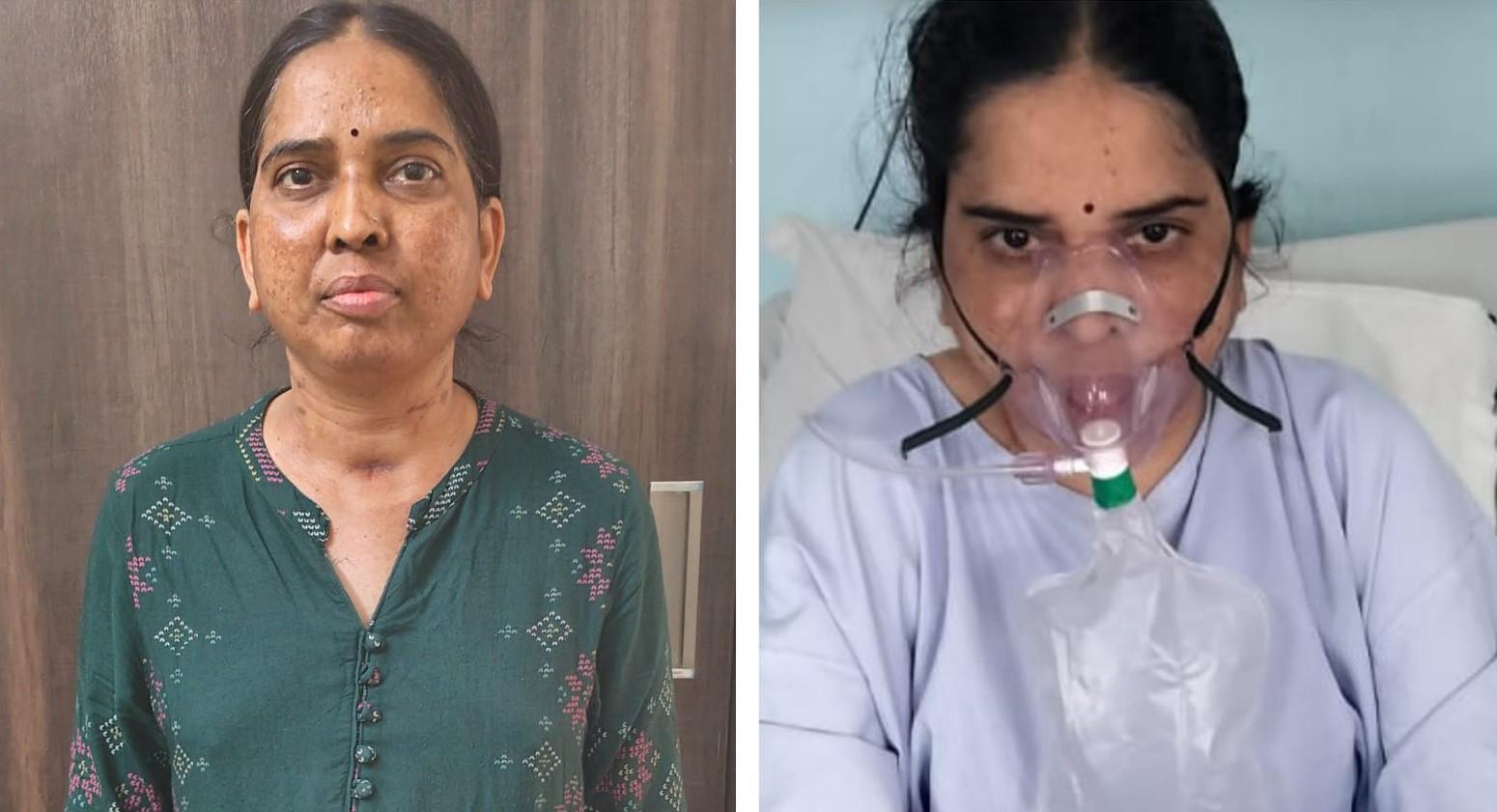Symptoms of Autoimmune Diseases:
- Muscle and joint pain or weakness
- Insomnia, weight loss, heat intolerance, rapid heartbeat
- Recurrent rashes, sun-sensitivity, butterfly-shaped rash on nose and cheeks
- Hair loss, white patches on skin or inside mouth
- Dry mouth, eyes, or skin
- Tingling, numbness in feet or hands
- Difficulty concentrating
- Abdominal pain, blood or mucus in stool, diarrhea
- Mouth ulcers
- Blood clots
- Multiple miscarriages
Causes of Autoimmune Diseases:
- Environmental irritants
- Bacteria or virus
- Chemical irritants
- Drugs
- Genetic predisposition, especially in women
Types of Autoimmune Diseases:
- Diabetes: Immune system attacks insulin-producing cells in the pancreas
- Rheumatoid Arthritis (RA): Immune system attacks joints, causing stiffness, redness, soreness, and warmth
- Psoriasis or Psoriatic Arthritis: Rapid multiplication of skin cells, forming scaly, red patches
- Multiple Sclerosis: Damage to the myelin sheath, disrupting nerve cell message transmission
- Systemic Lupus Erythematosus (Lupus): Affects various organs, including heart, brain, joints, and kidneys
Treatment Options for Autoimmune Diseases:
- Medications: NSAIDs (naproxen, ibuprofen), immune-suppressing drugs
- Symptom management: Skin rashes, pain, swelling, fatigue
- Lifestyle: Regular exercise, well-balanced diet
Follow-up Care after Treatment:
- Regular doctor appointments
- Monitoring progress through exams and discussions
- Clear communication about conditions and side effects for optimal ongoing management
Autoimmune diseases are a group of complex and diverse medical conditions characterized by the immune system's misguided attack on the body's own cells and tissues. In a healthy immune system, the body distinguishes between its own cells and foreign invaders, such as viruses and bacteria. However, in autoimmune diseases, this regulatory mechanism malfunctions, leading to an immune response directed against the body's own tissues. This can result in inflammation, damage to organs, and a range of symptoms depending on the specific autoimmune condition. With over 80 recognized autoimmune diseases, affecting millions of individuals worldwide, these disorders pose significant challenges for diagnosis, treatment, and ongoing management.
Understanding Chronic Daily Headache (CDH):
CDH is characterized by persistent headaches occurring for 15 or more days a month, lasting at least three months.
Prevalent condition, affecting nearly 5% of the unselected population.
Some headaches may indicate severe or life-threatening causes.
Types of Headaches and Their Characteristics:
- Various types include tension headaches, migraines, cluster headaches, sinus headaches, and rebound headaches.
- Symptoms range from dull aches to intense, throbbing pain.
- Factors include hormonal changes, physical exertion, or medication overuse.
Symptoms for Urgent Medical Attention:
- Fever, sudden changes in headache patterns, neurological symptoms, or headaches associated with serious diseases.
- Contact healthcare professional for persistent or worsening headache symptoms.
Causes and Diagnosis of Headaches:
- Causes vary: tension, hormonal changes, environmental triggers, sinusitis, high blood pressure.
- Diagnosis involves comprehensive examination, physical exams, medical history, and imaging tests if necessary.
Treatment Approaches and Options:
- Depend on underlying cause, ranging from non-prescription pain relievers to lifestyle modifications.
- Surgical intervention may be required in some cases.
- Risk factors include genetics, gender, age, lifestyle, and environmental factors.
Complications Associated with Headaches:
- Complications: stroke, brain tumors, meningitis, brain aneurysms, seizures.
- Importance of timely medical attention.
- Preventive measures: staying hydrated, managing stress, getting enough sleep, regular exercise.
Advanced Facilities for Headache Treatment:
- Facilities like Gleneagles Institute of Neurosciences offer comprehensive services.
- Specialized clinics for various headache types.
- Positive approach involves detailed discussions, understanding headache history, frequency, triggers, and addressing analgesic overuse.
Prognosis and the Importance of Early Diagnosis:
- Prognosis varies based on underlying cause.
- Emphasis on early diagnosis and treatment for better outcomes in individuals suffering from this pervasive condition.
Headaches are a common and often debilitating ailment that can affect individuals of all ages and backgrounds. Characterized by pain or discomfort in the head or neck region, headaches can manifest in various forms, such as tension headaches, migraines, or cluster headaches. The causes of headaches are diverse, ranging from stress and lack of sleep to underlying medical conditions. While most headaches are temporary and can be alleviated with rest or over-the-counter remedies, chronic or severe cases may require medical attention. Understanding the underlying triggers and adopting effective coping strategies are crucial for managing and preventing headaches, ensuring individuals can lead healthier and more productive lives.
Typhoid Fever Symptoms: Two Phases
Early Typhoid Fever Symptoms:
- Pyrexia starts low and increases daily, possibly reaching as high as 104.9°F.
- Headache
- Weakness and fatigue
- Muscle aches
- Sweating
- Dry cough
- Significant loss of weight and appetite
- Stomach ache
- Diarrhea or constipation
- Rashes over the skin
Later Stage of Typhoid Symptoms:
- Delirious
- Lie motionless and exhausted with half-closed eyes
- Life-threatening complications often take place during this period, with signs and symptoms potentially returning up to two weeks after the fever subsides.
Typhoid Causes: Faecal-Oral Route of Transmission
- Most people contract typhoid bacteria through the faecal-oral route, often while traveling.
- Salmonella typhi, present in infected individuals' feces and sometimes urine, spreads through contaminated water, food, or direct contact.
Typhoid Carriers: Post-Recovery Transmission
- Even after antibiotic treatment, some individuals (chronic carriers) continue to harbor Salmonella typhi without symptoms.
- Carriers can unknowingly infect others by excreting the bacteria in their feces.
Typhoid Diagnosis: Medical and Travel History
- Doctors diagnose typhoid based on symptoms and medical/travel history.
- Confirmation involves identifying Salmonella typhi in blood cultures or through body fluid or tissue examinations.
- Various tests, including ELISA and fluorescent antibody studies, may be employed for confirmation.
Typhoid Treatment: Antibiotics and Supportive Therapies
- Antibiotic therapy is the primary treatment for typhoid fever symptoms.
- Supportive measures include fluid or electrolyte replacement to combat dehydration from prolonged fever and diarrhea.
- In severe cases, intravenous fluids or surgery may be necessary.
Risk Factors of Typhoid Fever: Highest Vulnerability in Children
- Children face the highest risk, with factors including close contact, handling Salmonella typhi, and consuming contaminated water.
- Certain professionals, like clinical microbiologists, may also be at risk.
Possible Complications: Diverse Health Implications
- Complications range from intestinal bleeding and pneumonia to psychiatric problems like delirium and hallucinations.
- Inflammation of the heart muscle, inner lining, and associated valves are potential risks.
Prevention From Typhoid Fever: Vaccination and Hygiene Practices
- Prevention involves safe drinking water, proper sanitation, and seeking medical care.
- Vaccination is crucial, especially in high-risk areas. Travel precautions include handwashing, avoiding contaminated water, and safe food practices.
Typhoid Outlook: Treatment and Post-Recovery Considerations
- Symptoms typically improve within 2 to 4 weeks with antibiotic treatment.
- Incomplete treatment can lead to symptom recurrence, emphasizing adherence to medical guidelines for successful recovery.
Typhoid fever, caused by the Salmonella enterica serotype Typhi bacteria, is an acute illness transmitted through contaminated water or food. The bacterium, thriving in the intestines and bloodstream, circulates via direct contact with infected feces. S. Typhi persists in the intestine for 1 to 3 weeks before entering the circulatory system, subsequently infiltrating nearby tissues and organs. Its ability to live within host cells evades the immune system. Contracted through ingestion of contaminated water or food, the bacteria can persist for weeks in water or dried sewage, emphasizing the need for preventative measures to curb its spread.






























